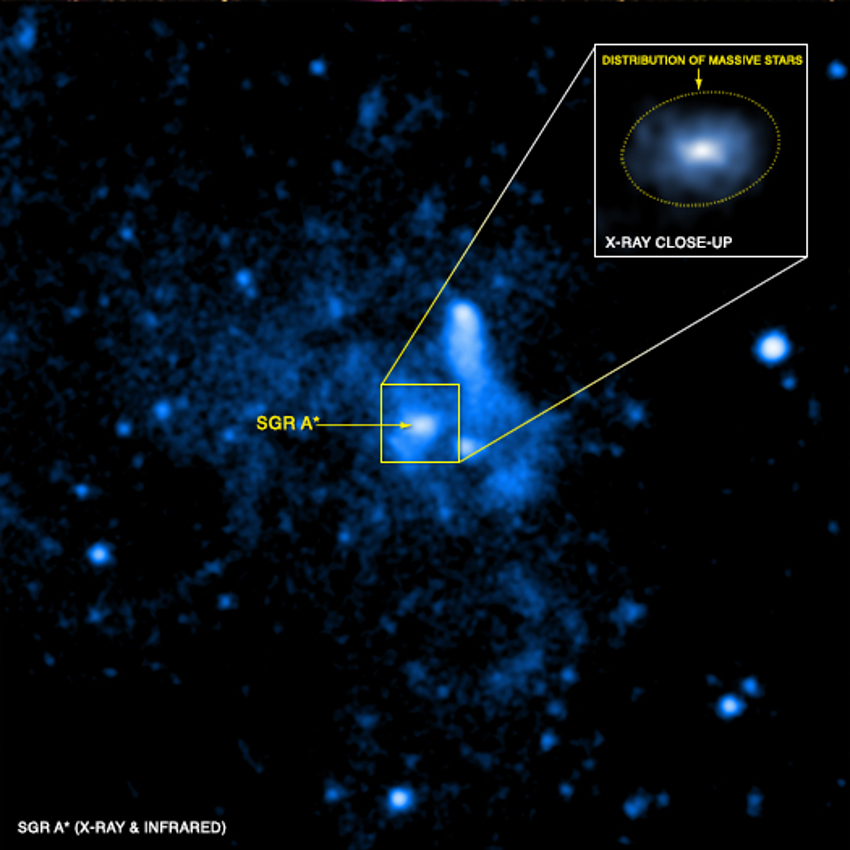
 Credit: X-ray: NASA/UMass/D.Wang et al.
Credit: X-ray: NASA/UMass/D.Wang et al.
Eating Habits of Sgr A*
The strange beast lurking at the center of the Milky Way, known by its radio moniker Sgr A*, is the nearest example we have of a supermassive black hole. Its mass has been accurately measured through the gravitational pull it exerts on nearby stars in its orbit. Unlike its more active cousins in other galaxies, Sgr A* produces little X-ray emission, indicating that the monster is (at least currently) a picky eater. Studies of the X-ray emission near Sgr A* provide astronomers with important constraints on the way in which matter enters the black hole, never to return to our Universe. But there's an important uncertainty, since stars relatively near the black hole could also produce X-ray emission, which might cause astronomers to overestimate the amount of celestial food Sgr A* is consuming. Now a breakthrough, extremely deep observation by the Chandra X-ray Observatory has obtained the best measure of the distribution of X-rays near Sgr A*. Among other things, this observation has shown that X-ray emission from low mass stars does not explain the observed X-rays from Sgr A*, so that the observed X-ray emission is dominated by hot material swirling down to the event horizon of the black hole. Astronomers are anxiously awaiting results from the near encounter of Sgr A* with an infalling gas cloud (dubbed "G2") which should take place sometime in the next few months, and which may provide some fireworks from the unassuming relativistic monster.
Published: September 2, 2013
<
HEA Dictionary ● Archive
● Search HEAPOW
● Other Languages
● HEAPOW on Facebook
● Download all Images
● Education ● HEAD
>

Each week the HEASARC
brings you new, exciting and beautiful images from X-ray and Gamma ray
astronomy. Check back each week and be sure to check out the HEAPOW archive!
Page Author: Dr. Michael F. Corcoran
Last modified Monday, 26-Feb-2024 17:23:52 EST


